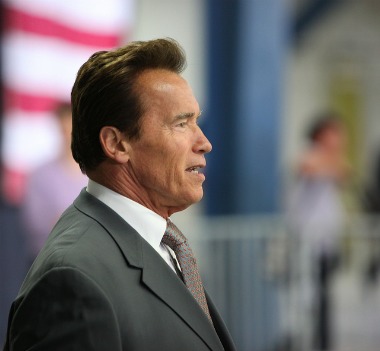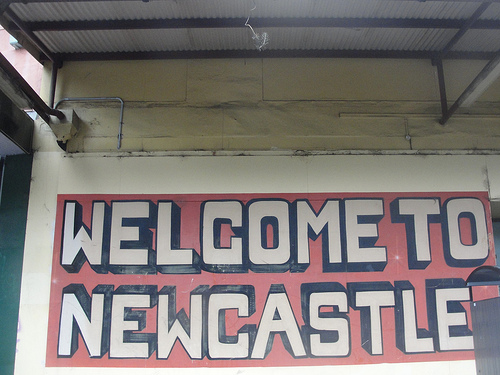What if saving a rundown city wasn’t about building expensive new infrastructure — hardware, so to speak — but instead reprogramming the existing infrastructure? Changing the software of the place?
That’s the analogy used by Marcus Westbury, founder of Renew Newcastle, an innovative initiative that has breathed life into the vacant downtown of that Australian city.
Newcastle, which grew up around the coal and steel industries, suffers from a lot of the same problems as Rust Belt cities in the United States. Its major employers shut down in the latter half of the 20th century, its transportation systems were dismantled, and retail decamped for the sprawling suburbs. The core of the city was vacant and neglected.
But Renew Newcastle has turned that around by making it easy for entrepreneurs and artists to move into vacant spaces and make creative use of them. The result? Lonely Planet recently named it one of the top 10 cities to visit in 2011.
Here’s an excerpt from an excellent piece by Westbury called “Cities as Software” (originally published in the Dutch architecture and design magazine Volume):
[Y]ou need to start by rewriting — or hacking — the software to change not what the city is but how it behaves …
Renew Newcastle, the not-for-profit company that we established in late 2008, is a piece of software. It is a broker. It is an enabler. It is an interface between the aging, decaying, and at times boarded-up built environment and those who seek to use and activate it. It connects the many empty spaces in the city with the passion of people who want to experiment and try things in them. It has facilitated more than 60 projects in more than 30 once empty spaces in just over two years. It has done so without building, buying or owning anything other than some computers and some second hand furnishings. It does not fund things — nor was it funded itself in its early stages — it just allows them to happen.
It has done so by changing the software of the city. Not in the slow and traditional way — the hard way — of seeking the political power to amend the rules, change the laws and rewrite the operating system. It has done so in an easier but less obvious way — it has followed the path of least resistance. Rather than rewrite the operating system it has hacked it and made it work in new ways.
Renew Newcastle started by hacking how much spaces cost and the terms they were available on. While there were over 150 empty buildings in Newcastle few if any of them were cheap or simple to access. They were bound up in complex rules — from bad tax incentives to complex, costly and long-term commercial leases that made it difficult to access them flexibly. Renew Newcastle traded cost for security. We created new rules, new contracts, and convinced owners to make spaces available for what was effectively barter — we would find people to clean them use them and clean them and activate them and they could have them back if and when they needed them. We stepped outside the default legal framework in which most property in Australia is managed and created a new one. We used licenses not leases, we asked for access not tenancy and exploited the loopholes those kinds of arrangements enabled. …
Yet cheap space is not in itself enough. It is not enough to simply change how much space costs, it is also vitally important to change how it behaves in the face of initiative. Renew Newcastle created a whole system to lower barriers to initiative and experimentation. We created another layer — between the operating system and the users to make it simpler and easier to enable experimentation and risk.
Again we followed the path of least resistance. We decided to make things simple that could be made simple and not butt up against what would remain impenetrably hard. We managed to do what is easy rather than get caught up in waiting for the ideal — to find spaces that were usable and use them. Renew Newcastle designed systems — an API in programming terms — that made activation simple. We took spaces, brokered cheap access to them and gauged what could be done in them easily — what they were already approved for — and set out to find it and plant and water it.
In doing so we effectively made a whole system to make space behave as quickly and responsively. To allow people with enthusiasm and passion to direct it into the city. We made it quick for people to try and cheap for them to fail. We removed capital and complexity from the equation and in doing so we seeded more than 60 experiments — unleashing the energy of hundreds of people.
We made the city work for people for whom it had not worked in a long time. People without capital for whom low barriers to entry and not certainty of outcome were the defining issues. Those who were operating digital cottage industries and Etsy stores, artists and fashion designers, bedroom record labels and Flickr photographers. In effect we made the physical space behave as their virtual spaces did — easy to get into and out of, allowing of experimentation and failure and most importantly full of tools and structures and plugins designed to make it simple and cheap for them to do what they are passionate about.
As cities age, the challenge is not always to rebuild them physically but to re-imagine how they might function and adapt. In Newcastle in many respects nothing has changed since 2008. The buildings are mostly the same. The hardware is unchanged. Nothing has been built. No government has fallen. No revolution has taken place. Yet, on another level much has changed — dead parts of the city are active and vibrant, 60 projects have started, hundreds of new events have been created, and whole new communities are directly engaged in creating whatever it is that the city will become. The software — the legal templates, the contracts and the thinking — that has enabled has changed Newcastle is becoming a kind of shareware — downloaded, hacked and implemented in cities and towns across Australia from Townsville to Adelaide.
Similar nimble, flexible approaches to improving the urban environment are emerging all over the United States — the Better Block projects that started in Dallas, the Park(ing) Day movement, the Pavement to Parks initiative in San Francisco. The new guide to Tactical Urbanism is filled with examples, and there are more coming along all the time, many spearheaded by people in their 20s and 30s.
Maybe a generation that has come of age in a digital world is fundamentally predisposed to seeing urban space as hackable.



